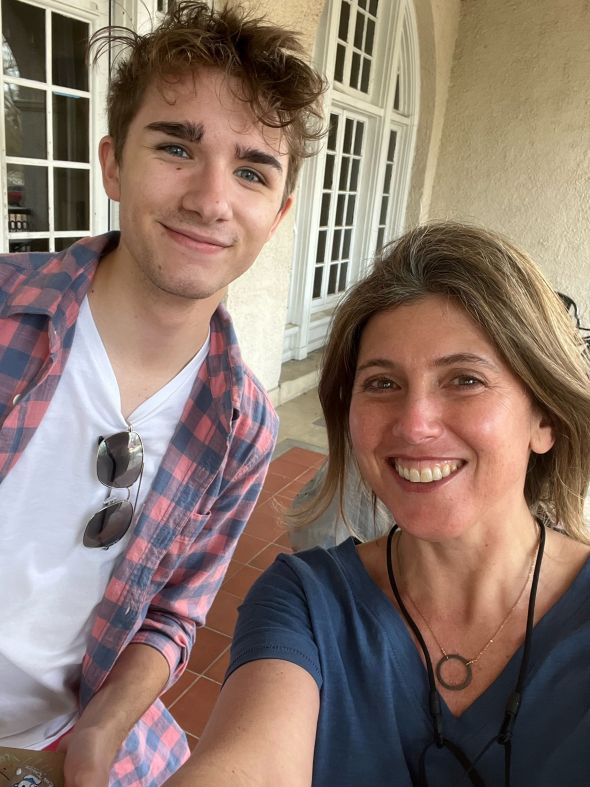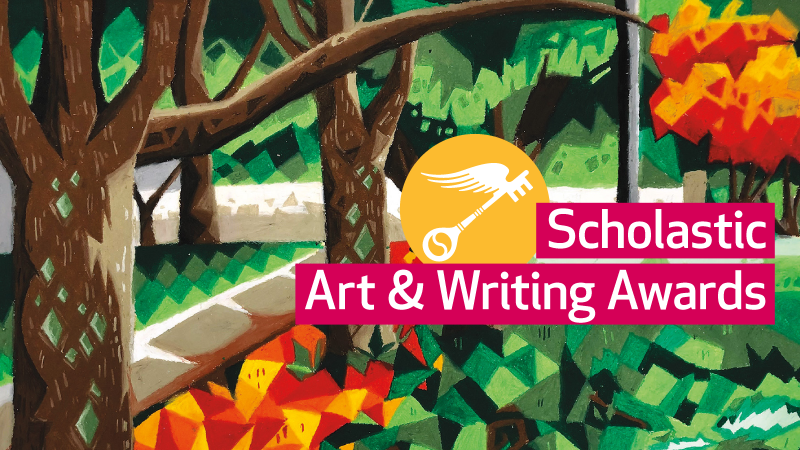By Maxine Osa, Publicist, Corporate Communications and Langley Leverett, Coordinator, Corporate Communications
Welcome back to our blog series dedicated to highlighting some of the extraordinary educators we’ve gotten to know through their participation in the Scholastic Art & Writing Awards. For the past 99 years, educators have played a significant role in the success of the Awards, inspiring, encouraging, and motivating their students to dream, craft, and submit remarkable works of art and writing. Each week leading up the national Awards ceremony at Carnegie Hall in June, we’ll be spotlighting a different educator that has played such a role in their students’ lives.
Today we will be closing out our series with Carrie Alter, a visual arts educator based in Durham, North Carolina. As the eldest of four sisters, Carrie jokes that she was, in a way, born and prepared to teach. With over 20 years of experience in art instruction and mentoring, Carrie began her career as a college-level art professor and occasional lecturer. However, after 15 years, she decided to teach high school and accept a position as the only full-time art instructor at the North Carolina School of Science.

Through a variety of five classes, Carrie teaches eleventh and twelfth-graders everything from the foundations of drawing and painting, to the philosophical connections between art, innovation, and technology. In her courses, students are introduced to many concepts, from traditional lessons in Studio Art and drawing, to modern VR painting and sculpting. Carrie loves to challenge both her students and herself to try new things and to be open-minded in exploring mediums.
As someone who sees art as a way of life, Carrie instructs her students with the multi-pronged message that embracing creativity is the key to innovation, happiness, and growth. When asked about her primary motivations in teaching art, she said:
“I teach because I believe that the practice of art promotes lifelong lessons and critical thinking skills that can enhance, or even save, a person’s life. Understanding how to link art concepts to other branches of knowledge and learning how to apply a creative mind to any discipline is the key to innovation. I found my definition of happiness in my creative practice. I want my students to have an advantage in life and within their chosen discipline.”
When asked about her connection to the Scholastic Art & Writing Awards, Carrie noted that she first came into contact with the program her first or second year at NCSSM when a student, who had submitted to the program on their own before, recommend she set up an account for the school. Ultimately, she did, and since then Carrie has been having students annually submit creative works to the program.

Since NCSSM is predominantly oriented toward STEM studies, Carrie makes it a priority to spread the word each year about the annual Scholastic Art & Writing Awards with her students, as well as integrate the program into her curricula. For the last five years, Alter has consistently encouraged her students to apply and has even included the program within her curriculum, by having students write their own “Artist Intentions,” a long-form statement that describes an individual’s personal mission statement as an artist.
Many of Carrie’s students have chosen to write their statements around the Scholastic Art & Writing Awards and have used them to help frame their Awards art portfolio submissions. One of her students, Mac Barnes, earned the Gold Medal Portfolio Award this year, which comes with a $10,000 scholarship, for his series of quilt-applique portraits titled “A Walk in Their Shoes.” In addition to Mac, Carrie has had one other student receive a national Gold Medal in 2020, as well as countless other students receive regional recognition throughout the years.

As an experienced instructor who has students submit work to the Awards for adjudication, Carrie is no stranger to criticism or the hardship that comes from having one’s creative pieces judged. To alleviate pressure on students, Carrie encourages them to practice viewing art with a judgement-free lens. She argues that the real artistic work begins in the mind, before materials or mediums are even used. Alter relates that she feels a sense of accomplishment when a student starts to follow and believe in their own artistic vision, not only when a student earns an award:
“I am successful when my students develop a relationship with their unique vision, when they challenge themselves, when they push their initial ideas beyond the literal, when they take creative risks, and when they grow from constructive criticism. When this alchemy happens, my reward is continued growth as a human being, artist, and arts educator. I teach my students that beauty is everywhere, but only a patient mind and eye will really see it. Technical skills are important, of course, and I am always happy for students when they create artwork that is empirically impressive and has that “wow factor.” But more important to me is witnessing a student attain the quiet accomplishment of merely looking at the world through their unique artistic lens.”
Thank you for following along as we highlighted these spectacular educators throughout this series. To learn more about the Scholastic Art & Writing Awards, please visit artandwriting.org.
All photos in body: Courtesy of Carrie Alter.



